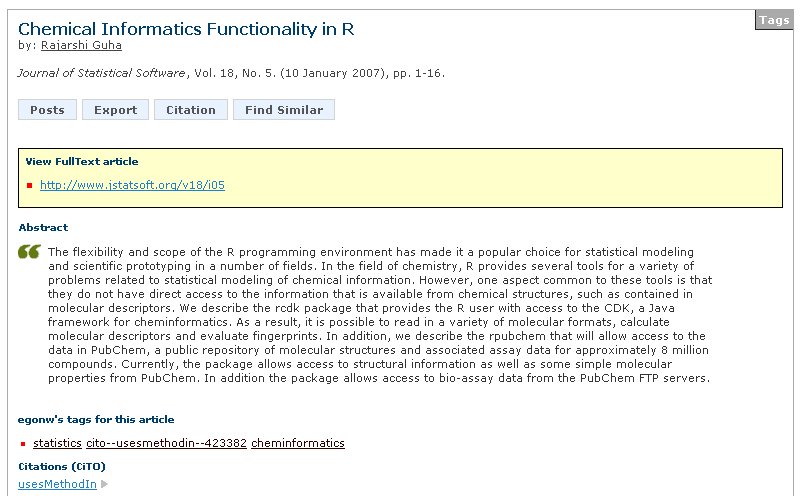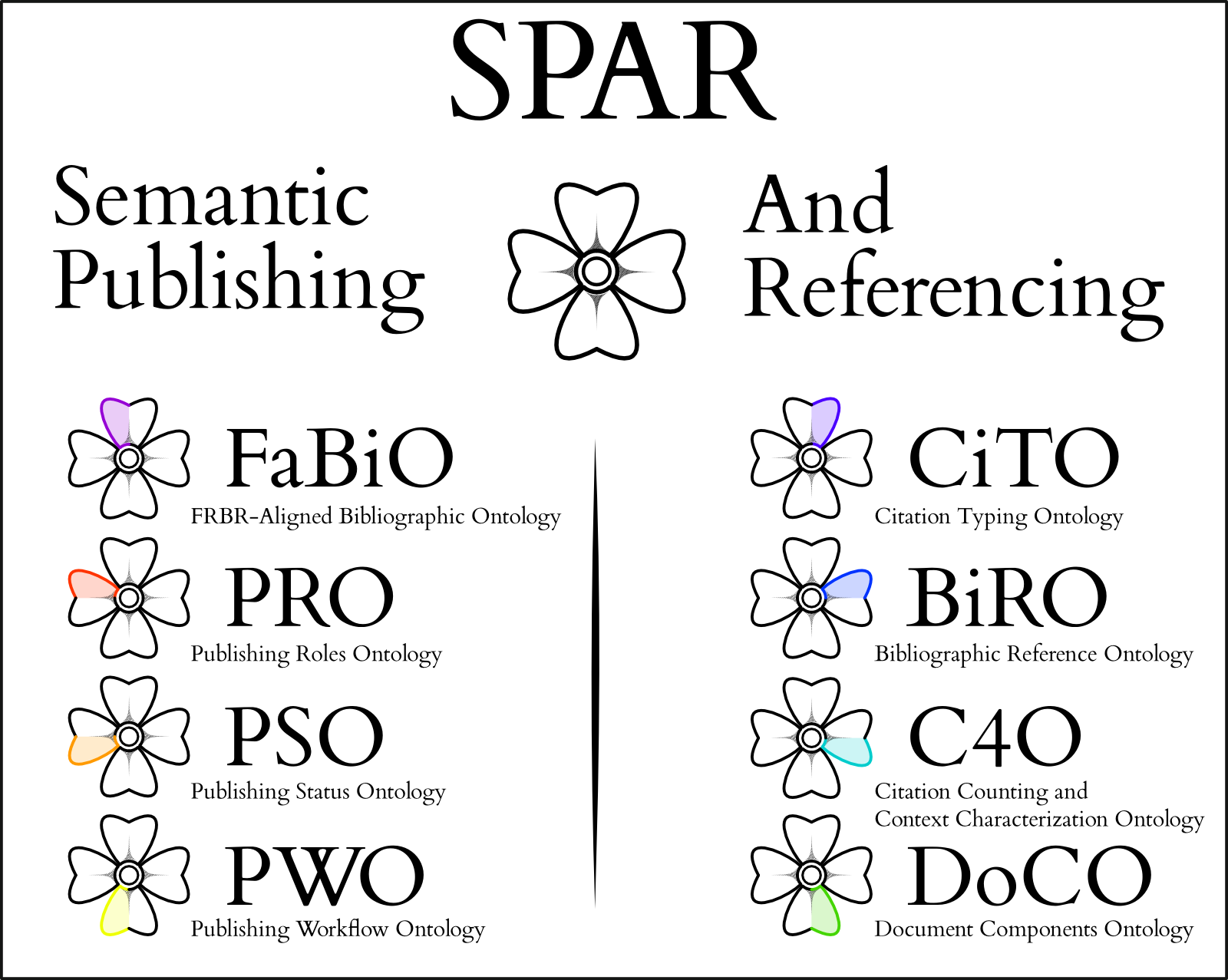Scholarly authoring and publishing is in the throes of a revolution, as the full potential of on-line publishing is explored.

Graffoo*,* a Graphical Framework for OWL Ontologies [1], is a wonderful new open source tool developed by Silvio Peroni that can be used to present the classes, properties and restrictions within OWL ontologies, or sub-sections of them, as clear and easy-to-understand diagrams.
Silvio Peroni has recently created LODE (Live OWL Documentation Environment;
The last four SPAR ontologies – the Document Components Ontology DoCO, the Publishing Roles Ontology PRO, the Publishing Status Ontology PSO and the Publishing Workflow Ontology PWO – were recently completed. All eight SPAR ontologies have now been thoroughly revised and checked, and are stable and ready for use.
In his recent blog post entitled How to use Citation Typing Ontology (CiTO) in your blog posts , Martin Fenner describes a plug-in for WordPress he has created that makes it easy to add citation typing into your blog post, using a sub-set of the CiTO (Citation Typing Ontology) relationships presented in a convenient drop-down menu.

Jodi Schneider of DERI has posted on her blog at http://jodischneider.com/blog/2010/10/18/cito-in-the-wild/ a most helpful description of how to employ CiTO properties characterizing bibliographic citations as tags for references in CiteULike. Thanks, Jodi!

Egon Willighagen, at Uppsala University, has pioneered the use of object properties from CiTO, the Citation Typing Ontology, to characterize bibliographic citations in CiteULike, the free service for managing and discovering scholarly references. Indeed, it was his use case that persuaded me of the need to generalize CiTO to include indirect citations.

This blog post is to introduce the first four ontologies of SPAR, the Semantic Publishing and Referencing Ontologies, an integrated ecosystem of generic ontologies shown diagrammatically in the ‘flower’ diagram below (Figure 1). The ontologies can be used either individually or in conjunction, as need dictates.
One of the biggest challenges faced by modern scientists is information overload. The life sciences are probably the area most affected by it, with almost a million new entries being added to PubMed each year.
The Open Citations Project is global in scope, designed to change the face of scientific publishing. It aims to make bibliographic citation links as easy to use as Web links. Its goals are three-fold: To establish OpenCitations.net, a public RDF triplestore for biomedical literature citations.
